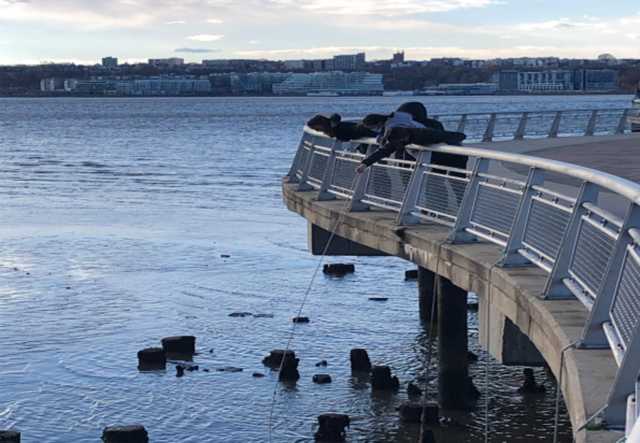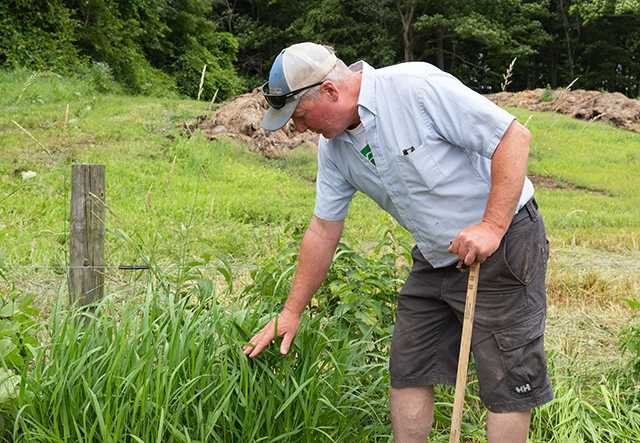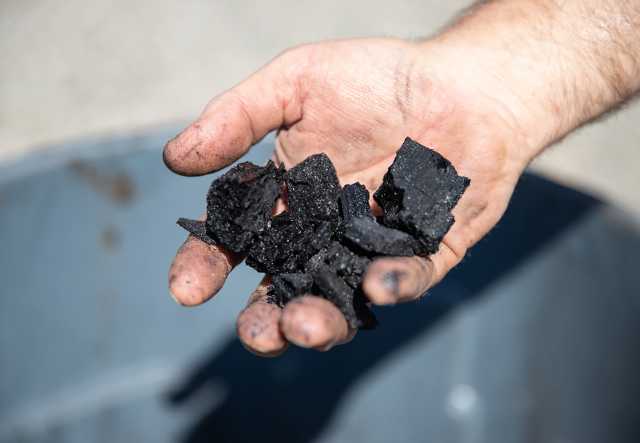These Educators Are Growing Climate Resilience

It’s mid-August at Shelburne Farms, and although the living room of Windmill House is full of people, it’s quiet except for the scratching and scribbling of pencils and markers on paper. Sitting on chairs and couches, educators sketch the future—that is, how they want to feel in the future—when it comes to climate change education.
This group of educators, 16 in total from the Northeast, are part of the Climate Resiliency Fellowship program, offered by Shelburne Farms Institute for Sustainable Schools. Throughout this school year, fellows will come together to deepen their expertise in teaching about climate change and climate solutions; in connecting students to place; and to support each other in what can be an emotional, heavy subject. Facilitators Aimee Arandia Østensen and Emily Schaller guide the journey, with guest presenters joining from around the region.
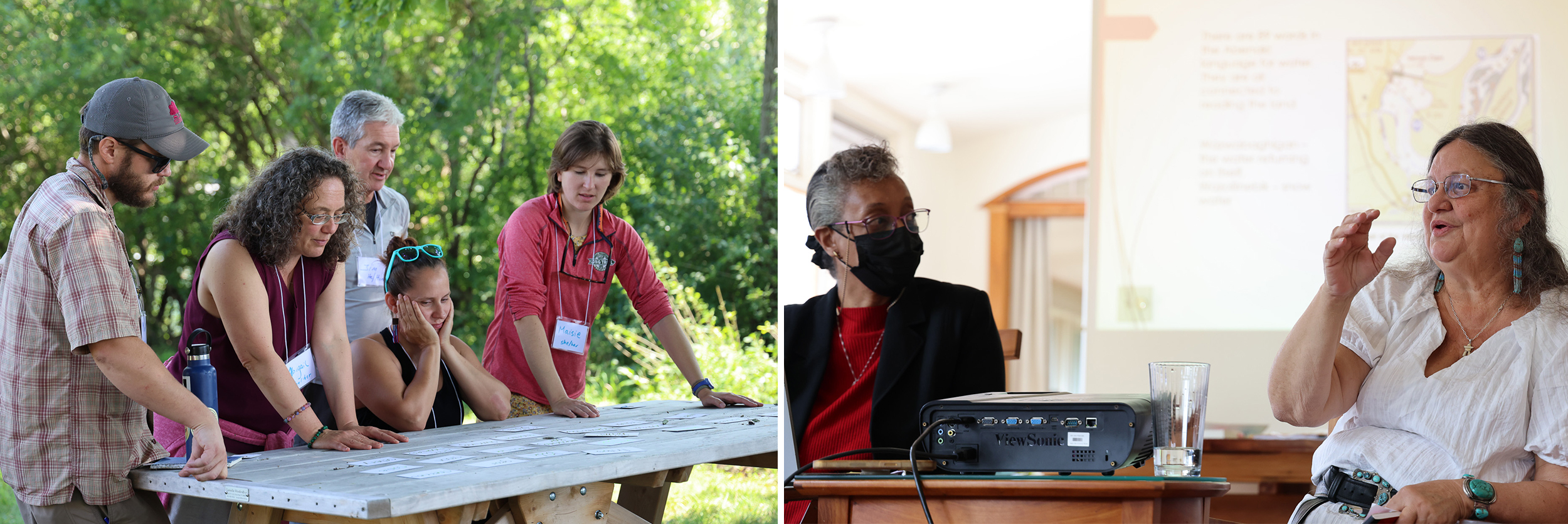
Climate change education feels more urgent now than perhaps ever before: Three-quarters of young people say they are frightened about their future because of climate change. The planet just experienced 14 months in a row of record-breaking heat, according to NOAA. And summer drought, among other disasters around the world, catastrophic flooding to Vermont.
Each fellow will connect students to their place, nurture a sense of wonder and care for the planet, and offer outlets for wrestling with the fear and anxiety associated with climate change. Fellows will implement projects in their schools or communities designed to support young peoples’ understanding of their place, providing a foundation for the next generation to make more sustainable decisions.
Meet four of this year’s fellows—teachers Brooke, Mark, Maisie, and Lindsey—and read about the projects that they’ll develop in the coming year.
 Brooke Piana, visual arts teacher
Brooke Piana, visual arts teacher
Woodstock Union High School and Middle School, Woodstock, VT
Her plan: To make more climate connections for her students in Grades 7–12, Brooke is in the process of developing a unit inspired by the nearby Ottauquechee River and its recurring flooding. “I’m hoping we can explore why the river is in its current formation and see if our artwork can play a role in improving the river’s health and our resilience.” This spring, her students will explore the history of the river, get on the ground to see what elements around the river are new, and grapple with what the community can do in the face of a changing climate.
 Mark Garner, science teacher
Mark Garner, science teacher
Ridge and Valley Charter School, Blairstown, NJ
His plan: To establish a climate-resilient forest on school grounds. The forest will serve as a site for student-led research: students will select climate-adapted tree species to plant, study best practices in forest management, and collect data over time. Mark is pulling inspiration from his recent experience in our Forest for Every Classroom program, too. “Through written and artistic reflections, I’m hoping students will help document the changes and stories of the land.”
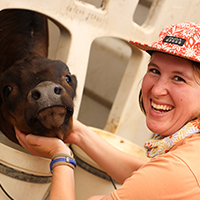 Maisie Anrod, 6th grade teacher
Maisie Anrod, 6th grade teacher
Lyman C. Hunt Middle School, Burlington, VT
Her plan: “A foundational piece of sustainability is cultivating a genuine connection with the land and understanding our deep interconnection with all of the species around us,” explains Maisie. She hopes to create a unit around food justice, which will include bringing her students into the school garden to learn about interdependence, ecosystems, and food webs among species in these ecosystems. “Food is an essential way to connect across cultures.” And, just think of all the ways climate change impacts farming, workers, and how people access food. “Food justice is an exciting way for social justice concepts to show up in a science/math classroom.”
 Lindsey Glabach Royce, STEM teacher
Lindsey Glabach Royce, STEM teacher
Dummerston School, Dummerston, VT
Her plan: To connect students to the land and to their community, Lindsey hopes to incorporate Indigenous and Traditional Ecological Knowledges in her fifth and sixth grade STEM classes—examples include teaching math and geometry through beadwork and basket weaving; sharing foraging skills and the many uses for native plants; and reading the geologic story of the surrounding landscape. “This knowledge isn’t only in the past. Kids need this knowledge for their well-being and the future.”
Stay tuned for more about their work, and congratulations to all of this year’s fellows:
- Maisie Anrod, Lyman C. Hunt Middle School, Burlington, VT
- Nika Blank, Peddie School, Highstown, NJ
- Jim Clifford, Connecticut Outdoor Environmental Education Association and the CT Climate Education Hub, Milford, CT
- Abigail Diehl-Noble and Camie Thompson, Lake Champlain Waldorf School, Shelburne, VT
- Liza Duncan, Abraham Clark High School, Roselle, NJ
- Melissa Fellows, Katrina Jimerson, and Brooke Piana, Woodstock Union High School Middle School, Woodstock, VT
- Corrine Gagnon, Shapleigh School/ Kittery School Department, Kittery, ME
- Mark Garner, Ridge and Valley Charter School, Blairstown, NJ
- Lindsey Glabach Royce, Dummerston School, Dummerston, VT
- Amanda Gustafson and Katey Wyndorf, Edmunds Middle School, Burlington, VT
- Laura Leavitt, White River Valley Elementary School, South Royalton, VT
- Aziza Malik, Champlain Elementary, Burlington, VT

